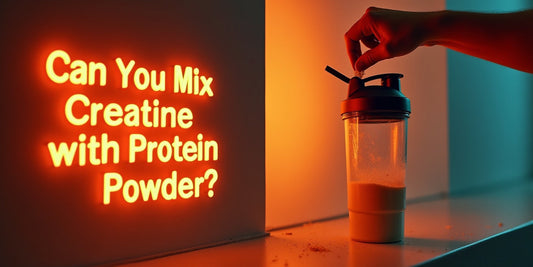

Women’s Guide to Protein and Post-Workout Recovery Formulas
Table of Contents
Women’s Guide to Protein and Post-Workout Recovery Formulas
By Larry Veteto, The Poliquin Group™
In recent years mainstream nutrition trends have been all about staying away from fats and carbs, and relying on protein to fuel a healthy lifestyle. While that’s simplistic thinking – all three macronutrients are necessary for complete nutrition – it is true that protein is key to building strong, healthy bodies. As someone who works out, you want to know how much protein you need, what kind, and how and when to incorporate it into your training regimen. That’s not always easy to figure out due to all the conflicting advice out there, and women trainees have the extra challenge of knowing that most of the recommendations are specifically for men. So in this article we’ll be looking at protein from a woman’s perspective.
Protein provides the building blocks for building and maintaining muscle. If you want to build the strength to climb mountains or power through those hills on your runs and bike rides, those muscles need protein. If you want to build some muscle to shape your body, those muscles need protein – in fact, a good way to look at it from a body transformation standpoint is that behind every feminine curve is a muscle. There are numerous other benefits of protein, including helping to keep hunger pangs at bay and stabilizing energy levels. Protein can be obtained from foods eaten at mealtime, from protein powders, and from post-workout recovery formulas.

As for how much protein is optimal, estimates vary; general recommendations by the Institute of Medicine range between 0.4 grams of protein per kilogram (2.2 pounds) of body weight for those who are sedentary and 0.85 grams for those who weight-train. Using this guideline, if you weigh 132 pounds and hit the cardio machines for about 45 minutes, three times a week, you need about 51 grams of protein. That’s good advice, but there’s a “but.”
For women who want to build a significant amount of muscle or become powerful for sports, the optimal ratio is higher. So if you want to serve like a Williams sister or just like to squat heavy, then if you weigh 132 pounds you might have to bump up that ratio and take in more than 51 grams. Also, athletes who are trying to lose weight need to increase their protein intake as their bodies begin to use protein more as an energy source.
INFINITE LABS PROTEIN
Checkout our line of high-quality of protein powders.
As you’ll discover by scanning the pages of women’s fitness magazines, the recommendations for weight-trained athletes usually start at 1 gram per kilo of body weight. However, a review published in 2011 in the Journal of Sports Sciences reported that protein consumption as high as 2 grams per kilo of body weight may be necessary “…in preventing lean mass losses during periods of energy restriction to promote fat loss.” Now we’re looking at 132 grams for our 132-pound example! When you consider that an average egg has six grams of protein and a three-ounce steak about 21 grams, we’re talking about a lot of food.
The problem with trying to fulfill protein requirements from eating regular food is that you’ll need to spend a lot more time cooking, time that a lot of us simply don’t have. It’s a lot more convenient (and often cheaper!) to mix some protein in a shaker bottle and drink a shake. Further, by consuming protein powders you can provide your body with precisely what you want – more protein – with minimal amounts of carbs or fat. And if you have issues with dairy products or cannot bring yourself to eat anything that had a face, there are protein powders made from rice, hemp, and peas that can fulfill your protein requirements.
 Two of the most popular types of protein are whey and casein, both made from milk. Casein is water insoluble, whereas whey protein is water soluble. As such, whey is more quickly digested in the body and less likely to cause digestive issues such as gas, bloating, and even diarrhea, which can be associated with casein because it puts considerably more stress on the digestive system. For this reason, the popular recommendation to use chocolate milk as a post-workout recovery drink is not a good choice.
Two of the most popular types of protein are whey and casein, both made from milk. Casein is water insoluble, whereas whey protein is water soluble. As such, whey is more quickly digested in the body and less likely to cause digestive issues such as gas, bloating, and even diarrhea, which can be associated with casein because it puts considerably more stress on the digestive system. For this reason, the popular recommendation to use chocolate milk as a post-workout recovery drink is not a good choice.
Having made a good case for investing in protein powders, let’s look at post-workout recovery drinks.
“Give your body what it’s thirsty for” is a typical advertising pitch for sports drinks to remind us to stay hydrated. After playing sports the body needs to replenish certain substances that are lost in sweat – such as electrolytes, which are substances involved in many bodily processes, including muscular contractions. Taking in electrolytes post-workout will also help with pH alkalization. If the body is too acidic, it can cause issues such as bowel disorders and inflammation. Replenishing electrolytes is a good beginning, but there is much more that the body needs. Starting, of course, with protein.
Taking in protein post-exercise will help increase protein synthesis, which is another way of saying muscle building. However, it’s not so much the quantity but the quality of the protein you consume at this time that is important.
The issue is that protein is made up of amino acids, of which there are three types: essential, nonessential, and conditionally essential. Essential means that the only way we can get it is from the diet. Nonessential means the body can make nonessential nutrients from all the essential content in our diets and other compounds already in our bodies. The third category includes the conditionally essential amino acids, and they are exactly as the name implies – they may become essential depending on what’s going on in our bodies. According to a research study published in the October 2002 issue of the American Journal of Physiology – Endocrinology and Metabolism, it’s the essential amino acids that really drive the anabolic response; the conditionally essential also play an important role. The nonessential amino acids don’t really matter much, which is why you must look at the ingredient panel (as opposed to the nutrition panel) on products you are considering buying. In fact, throwing in some cheap nonessential aminos into a post-workout formula to boost the protein content is a questionable practice known in the supplement industry as “protein spiking.”
There have been a significant number of clinical studies in this area, including research that looked at various amounts of whole protein after a workout, research that compared whole protein to just essential amino acids, research that combined whey protein with added amino acids, and so on. For example, one study showed that for muscle protein synthesis, 6 grams of essential amino acids can be as effective as 25 grams of whole whey protein.
What does this mean so far in terms of a desirable post-workout formula? If a manufacturer wants to give you the best bang for your buck, they will provide a mixture of quality protein along with additional essential amino acids. They will also include some specific conditionally essentially aminos to maximize the reduction in muscle breakdown, increase muscle protein synthesis, and drive the anabolic response.
Carbs are crucial in a post-workout formula. When you train, your muscles use a stored form of carbohydrates called glycogen for energy. The preferred type of carbohydrate to take post-workout is dextrose because it is rapidly digested. In contrast, using fructose in a post-workout formula is less effective and is often associated with digestive issues such as belching and flatulence.
 Some post-workout recovery formulas take things to the next level by adding specific vitamins and minerals, as these substances can be depleted during exercise. For example, a study published in January 1976 in Annals of Nutrition and Metabolism found that vitamin B2 is an antioxidant that may improve neuromuscular function and recovery. Magnesium, the fourth most abundant mineral in the body, is involved in hundreds of biochemical reactions that affect metabolic functions – an estimated 75 percent of Americans are deficient in this mineral, according to a paper published in the July 2009 issue of American Family Physician.
Some post-workout recovery formulas take things to the next level by adding specific vitamins and minerals, as these substances can be depleted during exercise. For example, a study published in January 1976 in Annals of Nutrition and Metabolism found that vitamin B2 is an antioxidant that may improve neuromuscular function and recovery. Magnesium, the fourth most abundant mineral in the body, is involved in hundreds of biochemical reactions that affect metabolic functions – an estimated 75 percent of Americans are deficient in this mineral, according to a paper published in the July 2009 issue of American Family Physician.
Other important substances to look for in a post-workout recovery formula are the conditionally essential amino acids such as glutamine, an amino acid that is depleted during exercise – in fact, 60 percent of the body’s glutamine is stored in skeletal muscle. Glutamine is especially popular in post-workout formulas because it helps protect GI integrity, among its many other functions.
The takeaway here is that while protein powders and post-workout recovery formulas both play important roles in helping you get the most from your workouts, a protein powder would be a poor substitute for an advanced post-workout recovery formula. Most importantly, read ingredient labels carefully so you know the nutritional products you buy can do what you want them to do.

















